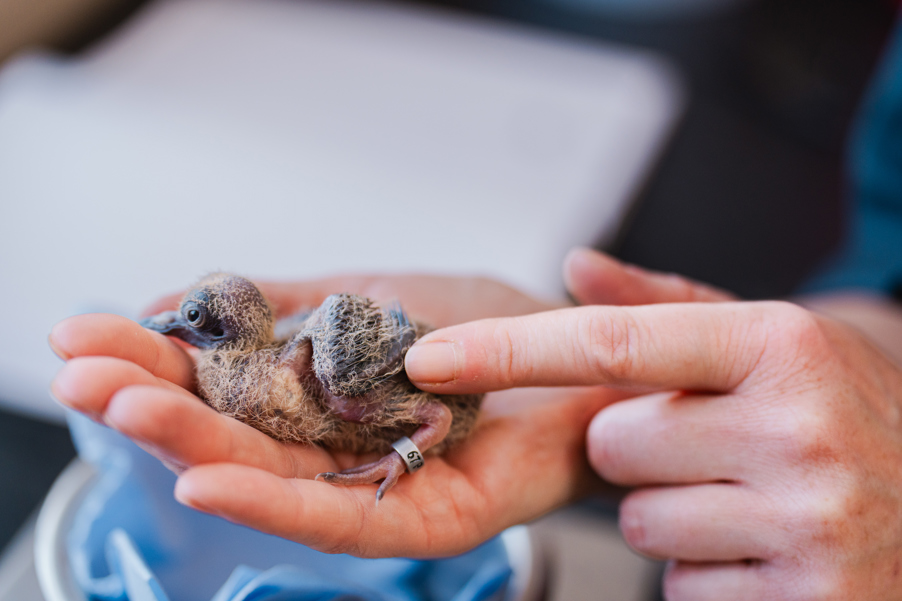
Dove love: eight rare chicks hatch, boosting the population of extinct-in-the-wild birds
Socorro doves have been extinct in the wild for decades, but eight healthy hatchlings are helping turn things around for the species.
Eight hatchlings are bringing fresh hope for Socorro dove survival.
Socorro doves are incredibly rare. Roughly 200 are being cared for by bird specialists across Europe and North America.
Our amazing aviculturists (bird experts) have successfully paired two Socorro dove couples, leading to eight chicks hatching at Chester over the summer.
These pictures show the first tiny birds to emerge from their shells. Several of them are now fully fledged, while the rest are growing well.
The Socorro doves came to Chester Zoo from London Zoo (ZSL) as part of an international conservation breeding programme which brings many in the zoo community together to preserve the species.

Socorro doves originally lived on Socorro Island off the coast of Mexico, but a mixture of factors led to their extinction in the wild.
Historically, they had few natural predators, but when people and sheep arrived in the 1800s, this caused extensive damage to the wild vegetation.
In 1957 a naval base was established on the island. This brought domestic cats which became feral and caused tremendous damage to the native wildlife, including the Socorro dove population.
The last bird was seen in the wild in 1972.
Sadly, the Socorro dove was overlooked by conservationists for many years and if it wasn’t for the efforts of a group of German aviculturists, who created a breeding programme for the species, it would have been lost forever.
Andrew Owen, head of the bird department at Chester Zoo
In 1995, the Socorro dove conservation breeding programme was formally established when the European Association of Zoos and Aquaria (EAZA) approved it as a European Endangered Species Programme (EEP).
Since then, a stable insurance population has been established and is looked after by keepers in several zoos.
Pairing the birds can be quite tricky as they are territorial, but the pairs at Chester Zoo were carefully introduced and monitored.
This resulted in several cluches of eggs being laid, which is typical for the species. Socorro dove mothers in the wild only had a narrow nesting window as Socorro island experiences storms and heat waves, so they would lay multiple times within a few months.

They might look quite plain and brown from a distance, but they have what looks like shimmery blusher on their heads. They have big personalities, too, with the males being a bit aggro – they certainly aren’t peace doves!
Clare Rafe - Assistant Team Manager - Birds
Unlike other species of doves, Socorro doves do not live in flocks, preferring to pair off or live individually. They also share chick-rearing duties.
Keepers say it’s a 50-50 arrangement most of the time, but they have found the females will raise their chicks up to a point and then become ready to mate again.
When that happens, the fathers take over with the older chicks, feeding them and caring for them. They can be quite devoted dads!
Much of the success of the programme is down to keepers at Frankfurt Zoo and ZLS and experts at organisations like Africam Safari, a park in Mexico.
Without the valuable work zoos do, these species would be lost forever. Our role at Chester Zoo is helping to maintain the insurance population and hopefully, at some point our birds will support the work done by ZSL and Frankfurt, and their descendants will see Socorro Island.
Andrew Owen, head of the bird department at Chester Zoo